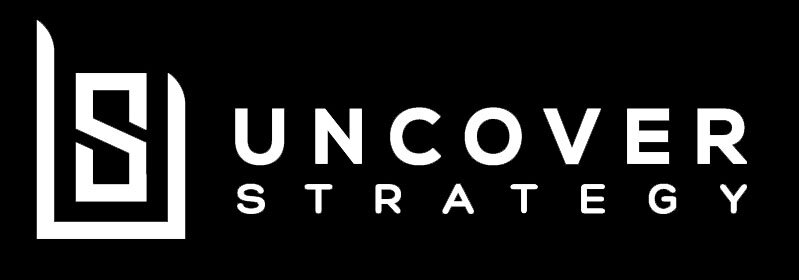What Managers Can Do to Stay Relevant in the AI-Future
Recombine.
Will managers be replaced by AI?
The short answer? No. But the management role itself will dramatically change.
As Rob Thomas, senior vice president of the IBM cloud and data platform, says in an CNBC news article back in 2020:
“AI is not going to replace managers but managers that use AI will replace those who do not”
But how can one do that? Where do you even start? What can you do right now?
Read on to discover three steps that not only will help you make that first step into the right direction, but perhaps more importantly, have fun while doing it.
Why You Should Care
I struggled with the idea to use anything related to AI here in my blog.
Really.
Maybe I was a bit too proud thinking that, if I use anything related to AI, I quickly will turn into yet another zombie blogger that looks just like the next one (please let me know if that is already the case). And, for many reasons, you actually should not use AI in content creation as outlined in my latest article. You might not only lose your personality when copy-pasting AI-output, but also the trust of your readers if they know you created content. People don’t want to read computer-generated stuff that didn’t require human effort. They understand it is tailored towards just gaining views and followers. This is why I don’t use it to create my content.
However, I came past some statistics that triggered my thinking to perhaps use it in different ways.
Source: Legacy Research Group via OpenAI (the company behind ChatGPT), 2020
Okay. The original data came from OpenAI—and is perhaps somewhat biased (they crafted the now-famous, conversational AI bot ChatGPT). But still—if this trend keeps continuing, the 2-year performance doubling rule (Moore’s Law) could not only be continued, but accelerated.
Now let’s put this next to a graph that somewhat resembles human expectation (which is more linear) that I talked about in a prior post.
Source: Timo Elliott, 2018
I’m sure you can see my point. AI has repeatedly been called the fourth industrial revolution. This time we are not “just” introducing a new technology.
We are introducing automated intelligence.
Actionable Steps
So what can you do to stay ahead of the curve? How can you fortify your job or company prospects in what will be coming in the next years? Read on to see a three-step plan to get you started.
Action Step 1: Have Fun.
AI can be scary.
When I first used ChatGPT, my mind was not only blown, but also somewhat filled with immediate fear: Where will this lead to? Who will be made redundant? And at what scale?
These are important questions, somewhat frightening questions. However, more importantly, fear induces inaction.
“Fear mainly induces inaction, while the thrill of a gain induces action” says Cognitive Science Professor Tali Sharot in a 2014 Ted Talk.
Source: i.gifer.com, 2023
We need to push though this fear and subsequent inaction. Only then are we likely to get started. And what is the best way to do this? I believe it is having fun!
At this stage, simply play around. Try things. See what today’s tools can do (and what you can imagine it can do in the future). Perhaps you could show the output of some funny generated AI GIF or ChatGPT output at the end of a lengthy meeting to fluff up the conversations. Anything. Just remember to have fun and to get a feel for what’s out there.
See the examples below (I am currently working in the bicycle industry).
Prompt: “A bicycle factory where all employees are sitting on a hayball.”
Source: canvas.com, 2023
Action Step 2: Brainstorm.
If you actually made it to the second step (and are not just reading this), congrats! No, really, you are already ahead of others. Not only did you make time (or procrastinate, let’s be honest), but you put the tools to actual use. You perhaps got out of your operational, daily routine.
Source: tenor.com, 2023
Grab a cup of coffee of some sort and think if there is any way for you to incorporate some of these tools. But don’t go out and start playing around yet. Just think and imagine. Come up with as many ideas as you can. You are allowed to aggressively wave the pen over your ideas later to cross out the bad ones.
Don’t think of having to integrate anything at this point. You don’t have the time to do this. I get it. We are all busy.
Just try to come up with as many things you can imagine AI to help you or your company work better, create better products or provide a better service.
Action Step 3: Start (Anything).
Now that you have done the brainstorm exercise, I have a confession to make. I lied to you. I want you to start something. Today.
But don’t panic. You don’t need to call up any AI professionals or organizations and prepare your accounting department for a big spending item for the coming financial year. None of that.
Source: digiday.com, 2023
But you need to do something. Otherwise, if you read up until here, I doubt the value of my post. And because I DO want to give you value for your work, here are some of the ideas I came up with on how to get started to become that manager or company that is not being replaced but uses AI in the future.
· Register for a practice-oriented AI conference or event or newsletter such as the Transatlantic AI eXchange.
· Show management or colleagues an example of the output you came up with during the first step (remember, concrete examples are always the key for buy-in).
· Use ChatGPT in some of your work (but be ethical) or daily routine, such as fixing your German or English grammar and spelling.
· For the more tech-savvy managers, draw a data flow map where you can imagine AI transforming data at some point and use data transformation tools such as yedi.
· Summarize lengthy texts or emails for management via ChatGPT.
· Send the product department team a photo of a new product generated by an AI engine (but watch out to not indirectly critique existing work).
Congratulations
This process might seem trivial. Still, I firmly believe it works. The reason: By making things not you not only actually have fun, but it reduces the likelihood of you going back to daily business, pushing the ideas into your mental drawer labelled “to do later”. We both know this will never happen.
It not only breaks down the first barrier of fear, but actually gets you started. Who knows what will come out of it. Perhaps the tools are currently making too many mistakes. Perhaps they will not work in your context. They might not be advanced enough (yet).
With what will be coming, though, you have made an important first step and prepped your mind with ideas on how you could deploy AI in the future. Otherwise, you don’t know what you don’t know. Doing this exercise once could make all the difference.








